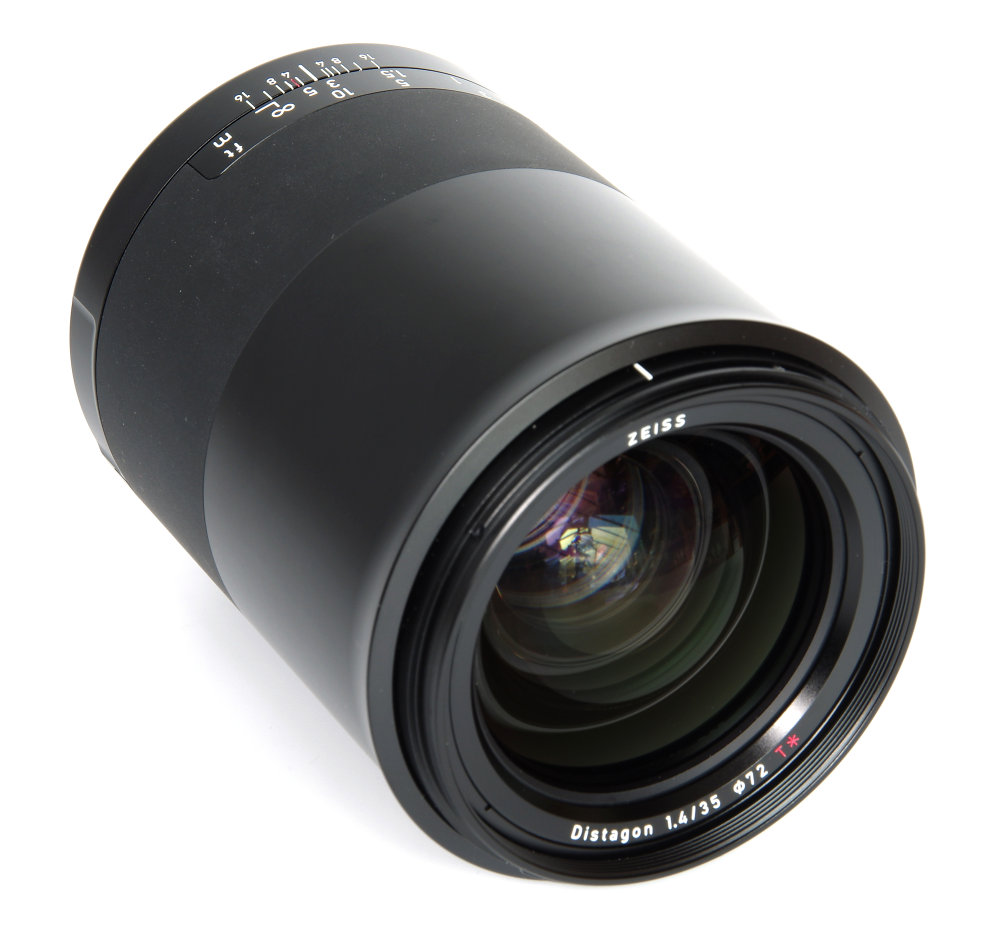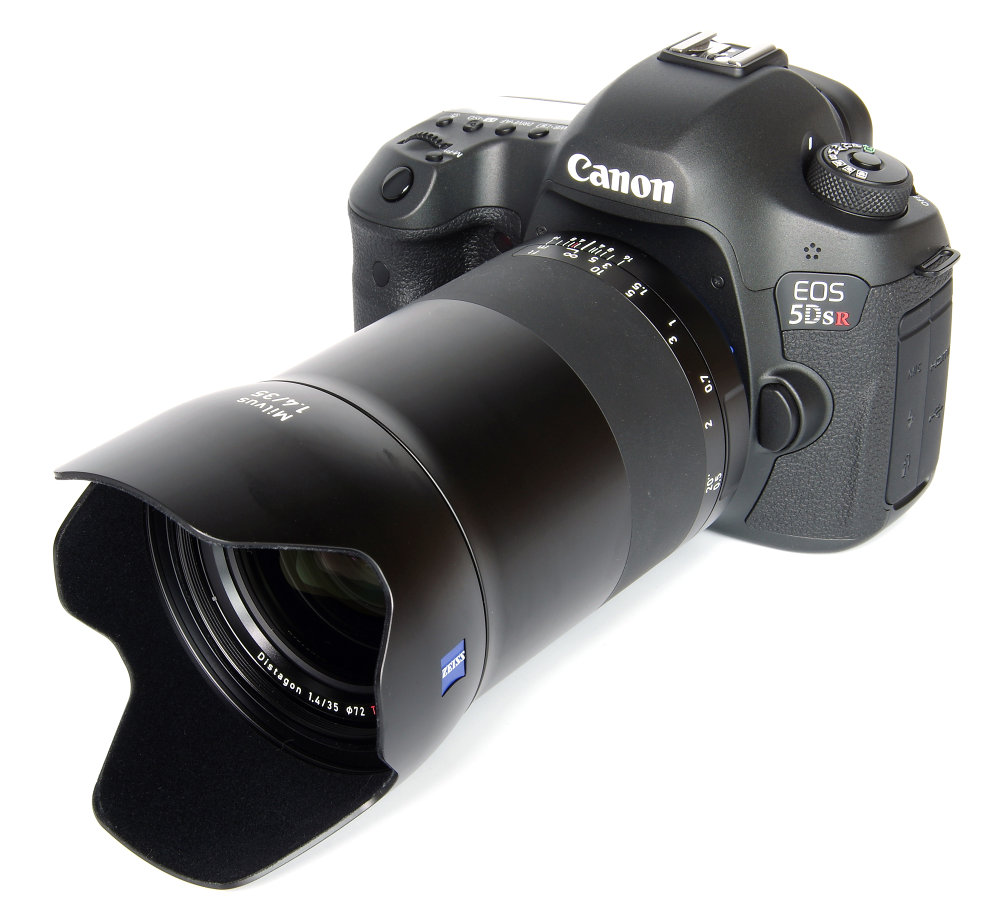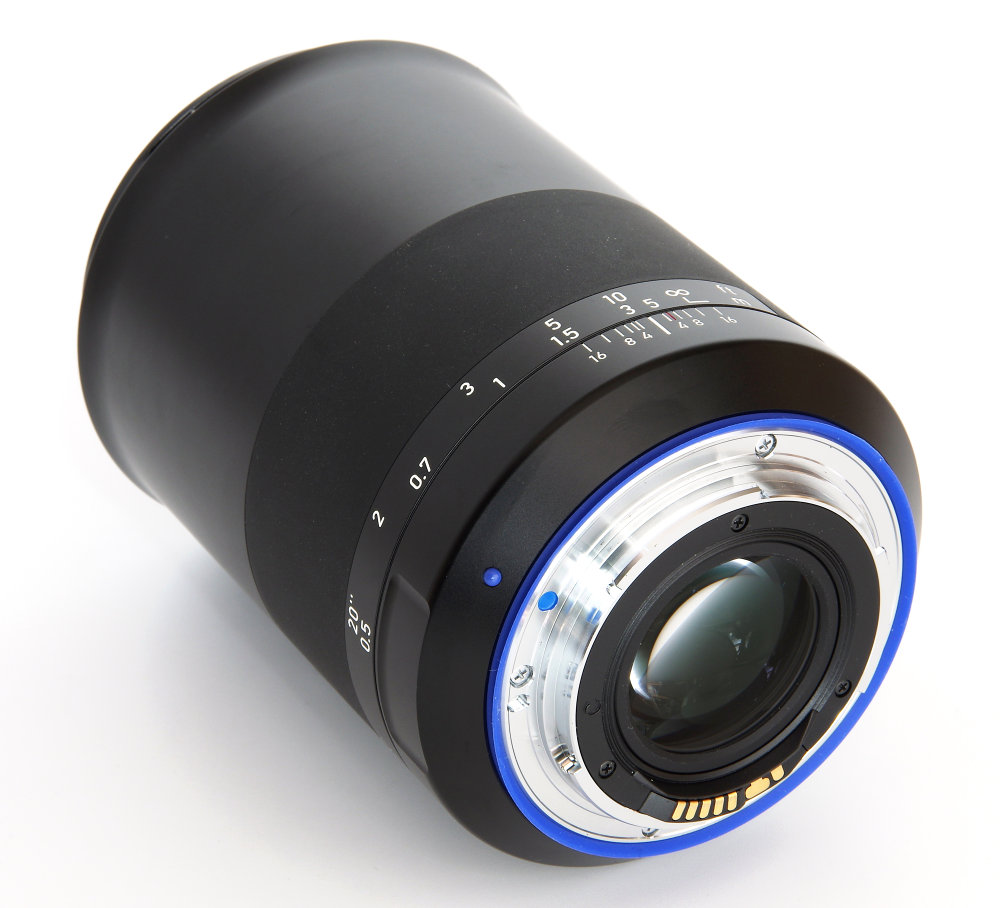Zeiss Milvus 35mm f/1.4 Review
Zeiss Milvus 35mm f/1.4 Handling and Features
The packaging itself gives us the impression that we have a high quality, solid product, minimalistic in design but beautifully made, including very high-quality dense foam that protects the lens in transit, the packaging encourages confidence right from the start. The lens itself is metal, heavy at 1174g (Nikon) or 1103g (Canon) and also very large for a 35mm optic. A solid metal lens hood is also provided and this bayonets into place with a smoothness that speaks volumes for the precision of the engineering.
The lens is T* coated, suppressing internal reflections and flare. The whole lens is dust and moisture protected. Filter size is a reasonable 72mm, not too bad in terms of cost. Although filters can be fitted, such is the potential quality of the glass that I would generally only use the lens hood, which is generously sized and should offer excellent shielding of the front element.
The lens sits very well on the Canon EOS 5DS R used for this review. The balance is excellent, albeit with quite a hefty weight and size to carry around.
Previously I have commented that the rubberised finish on some Zeiss lenses was somewhat prone to picking up specks of dust, but this lens does not seem to have that same problem. The whole of the lens barrel turns to operate the internal focusing, which in effect makes for an enormous focusing ring, part of which is rubberised. The front element does not rotate, making the use of polarisers easier. Focusing is down to 30cm, a fairly standard distance for a full frame 35mm lens. This represents a maximum magnification of 1:4.6.
Optical construction is 14 elements in 11 groups. There are aspheric elements and anomalous partial dispersion glass is used. Rounded diaphragm blades complete the optical picture, resulting in Zeiss claiming that the lens has “creamy bokeh” and is ideal for portraits. It must be said that a 35mm lens does not leap out as the first choice for portraits as approaching too close will distort the features. Short telephoto lenses from 85mm upwards are more usually used as portrait lenses. However, portraiture is possible if we do not approach too closely.
On the Canon version, there are no other adornments and aperture control is via the camera body. On the Nikon version, there is an aperture ring, set to the smallest aperture if an “A” setting is required. The click stops on the Nikon version can also be switched off, to allow smooth and silent aperture changes when shooting video.
Currently, manual focusing does seem to be very popular, with many lenses on the market at various focal lengths. Ease of focusing depends not only on the lens but also the camera and any focusing aids that may be present. This lens on the Canon EOS 5DS R proved to be very easy to focus, the image snapping in and out very acutely. No doubt the bright f/1.4 aperture has much to do with this, with its razor-thin depth of field.
Overall, the lens is fantastic in use, there being nothing that could get in the way of shooting the images. Its very simplicity is quite refreshing and the feeling of quality adds a certain something to the photographic experience.
Add your message
Please login here or if you've not registered, you can register here. Registering is safe, quick and free.
photodo Stats
428 MTF tests
74 in-depth photodo reviews
100+ users join each day
Help the lens community by reviewing or rating a lens today via our lens search
Latest Lens Reviews
- Chinon 28mm f/2.8 Vintage Lens Review
- Canon EF 70-200mm f/4L IS II USM Lens Review
- Samyang AF 85mm f/1.4 EF Review
- Sigma 70mm f/2.8 DG Macro Art Review
- Samyang AF 24mm f/2.8 FE Review
- Meike 50mm f/1.7 Review
- Tamron 70-210mm f/4 Di VC USD Review
- Lensbaby Burnside 35mm f/2.8 Review
- Asahi Super Takumar 50mm f/1.4 Review
- Asahi Super-Multi-Coated Takumar 135mm f/3.5 Review



